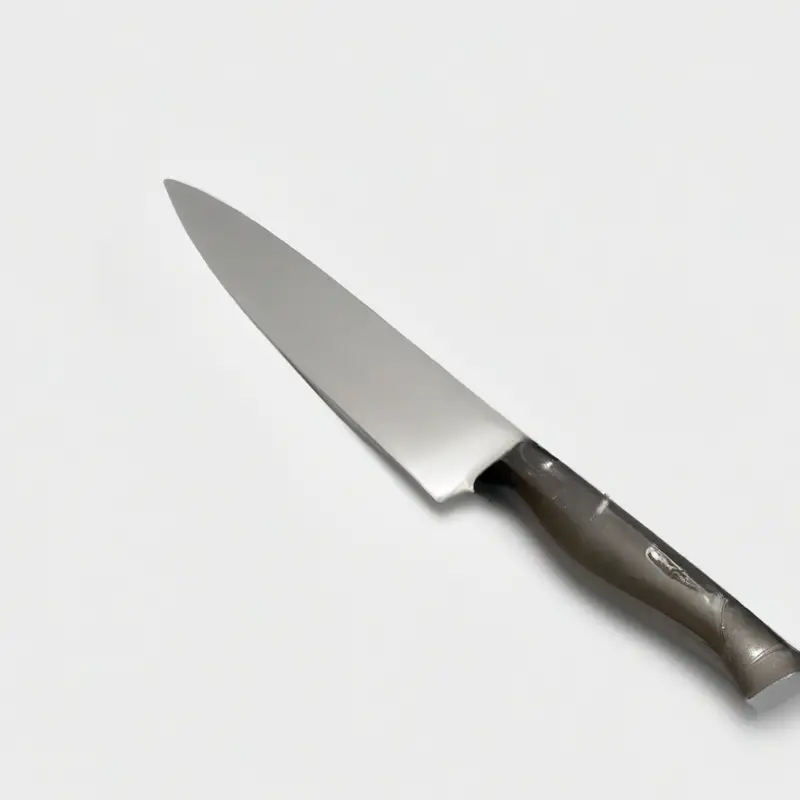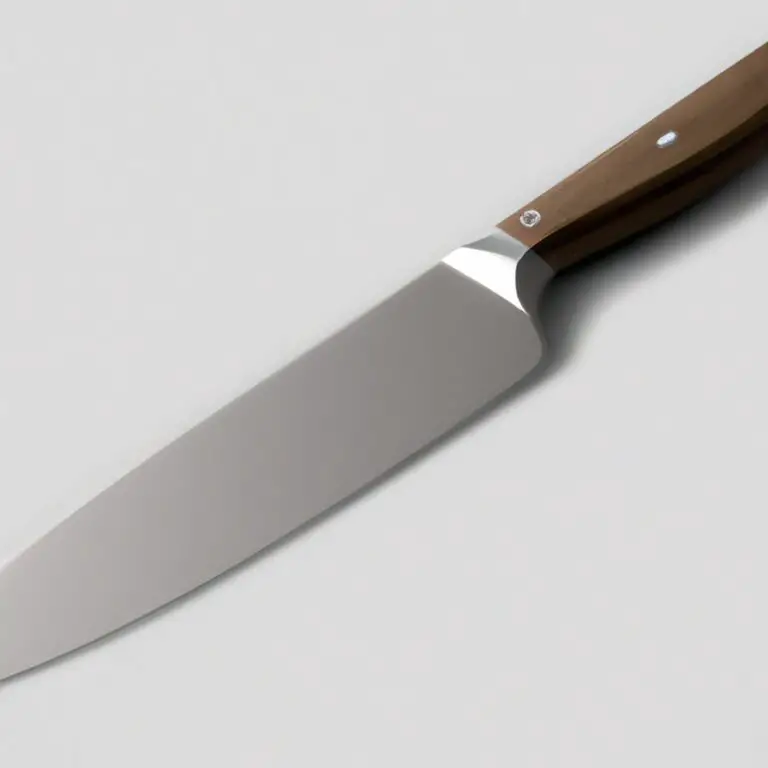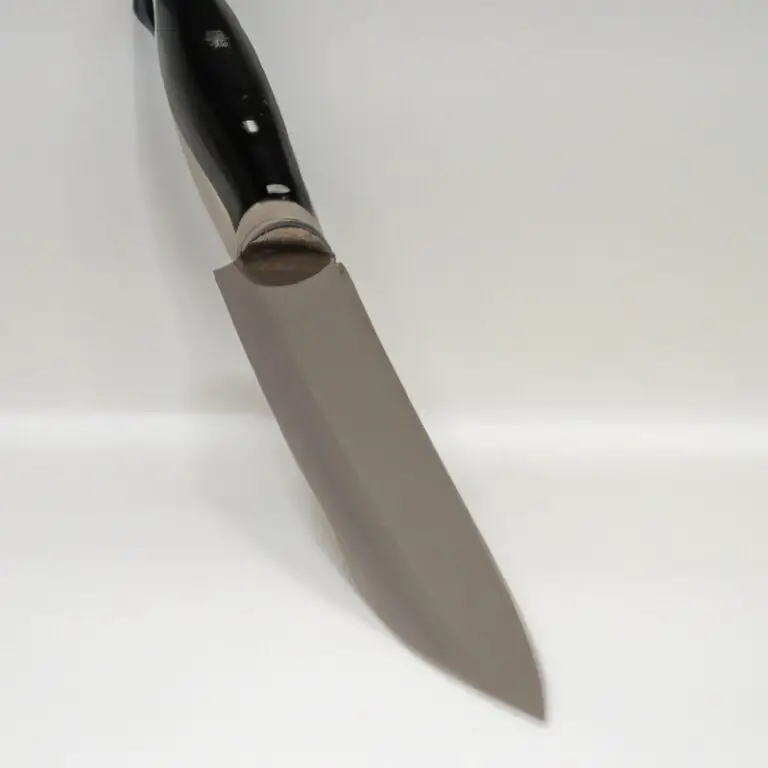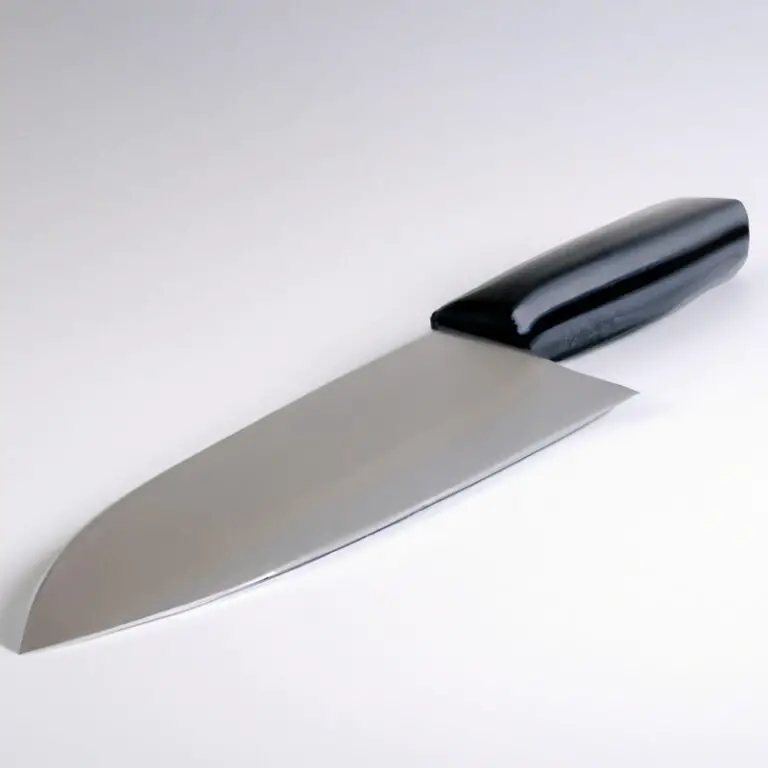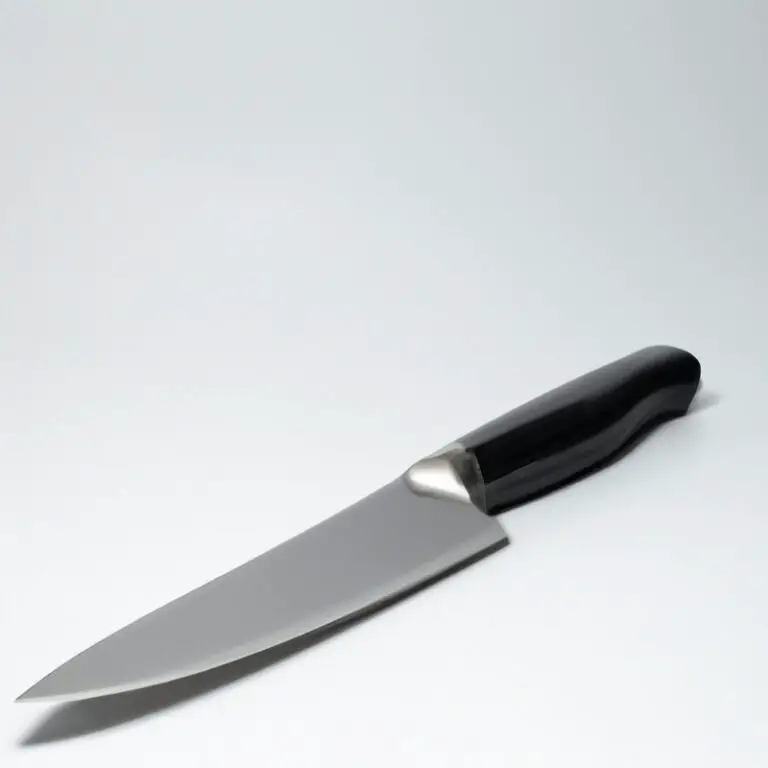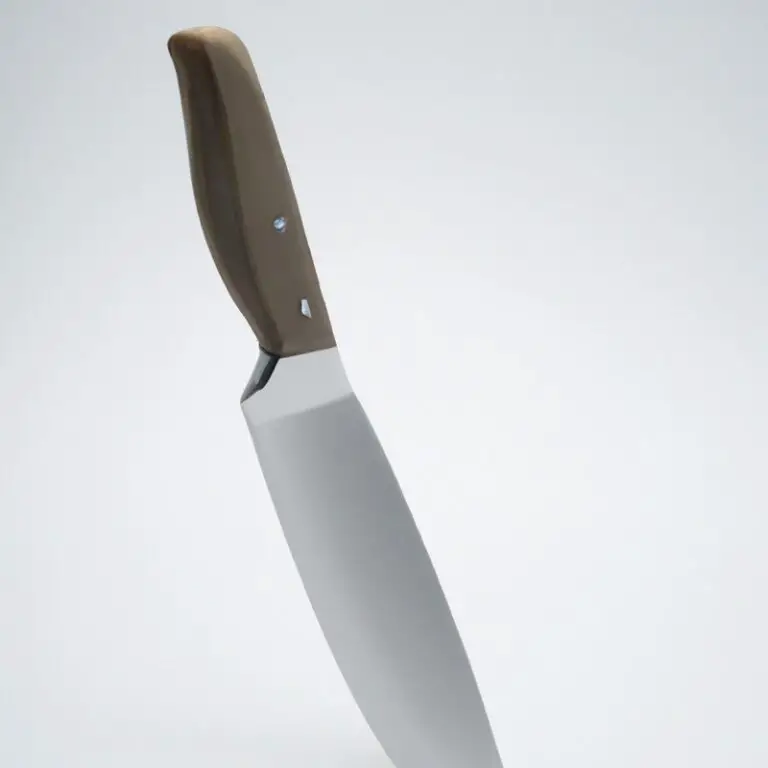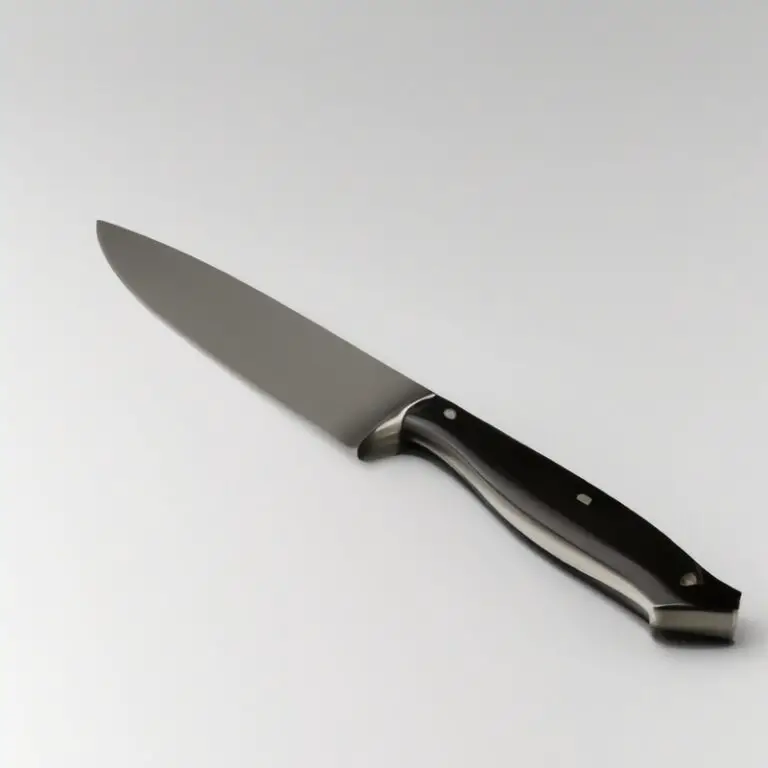What Is a Boning Knife Used For?
Key Takeaways:
- A boning knife is a specialized kitchen tool designed for separating meat from bones and removing fat.
- The blade of a boning knife is narrow and flexible, allowing for precise cuts and maneuverability.
- Using a boning knife can enhance the quality and presentation of meat dishes, as it ensures that all unwanted parts are removed before cooking.
- When choosing a boning knife, it’s important to consider the size and type of meat you’ll be working with, as well as the grip and comfort of the handle.
Are you tired of struggling to remove bones from your poultry or fish? A boning knife might just be the solution to your kitchen woes.
As a professional chef, I can attest to the versatile applications of this essential tool beyond just filleting.
From trimming fat to deboning chicken, the right boning knife can make all the difference in the precision and efficiency of your culinary preparations. In this article, I’ll share my expertise on the anatomy, types, benefits, and maintenance of a boning knife, as well as tips and techniques for getting the most out of this indispensable kitchen utensil.
| Boning Knife | Uses |
|---|---|
| Flexible Boning Knife | Great for filleting fish, trimming meat, and removing bones from poultry. |
| Hollow Edge Boning Knife | Useful for slicing delicate meats, such as ham or prosciutto. |
| Fillet Knife | Perfect for deboning fish, such as salmon or trout, or for filleting larger cuts of meat. |
| Curved Boning Knife | Ideal for working around bones and joints, such as when deboning a chicken. |
Anatomy of a Boning Knife: Understanding the Parts That Make Up the Perfect Tool
A boning knife typically has a pointed, narrow blade that curves upward from the handle and tapers to a sharp tip. The blade is stiff and thin, allowing for precision when maneuvering around bones or joints in meats or fish.
The blade of a boning knife usually ranges from 5 to 7 inches in length and is made of either high carbon stainless steel or ceramic.
The handle of a boning knife is designed for a comfortable grip and is typically made of durable materials such as wood, plastic or rubber. The shape and size of the handle may vary depending on personal preference, but should provide a secure grip to prevent the knife from slipping during use.
Overall, the anatomy of a boning knife is built for precision and accuracy when removing bones from meats and fish, making it a must-have tool for any kitchen.
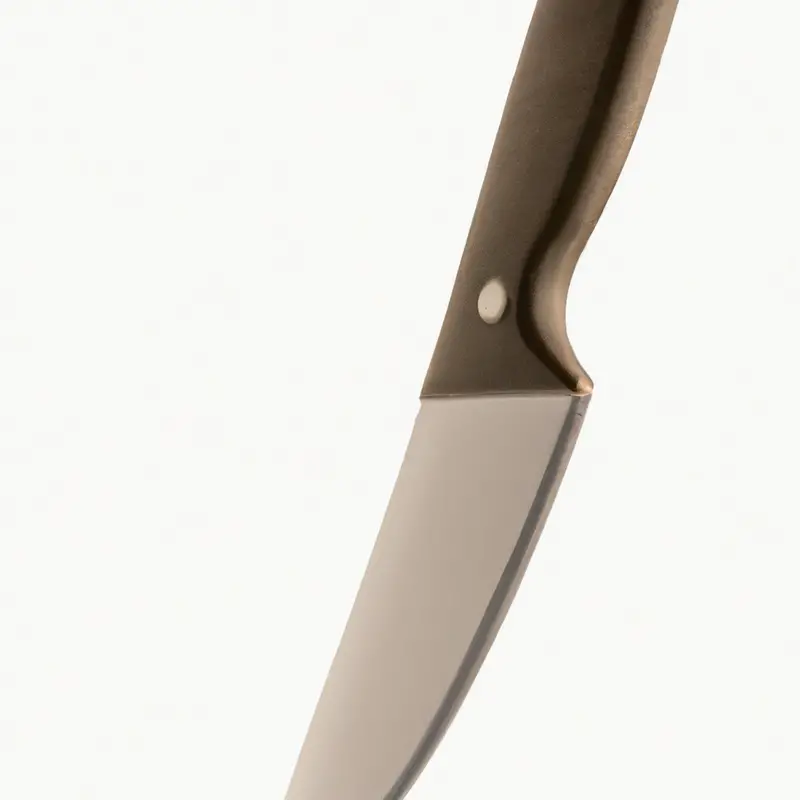
Types of Boning Knives: Which One is Right for Your Culinary Needs?
There are three main types of boning knives – stiff, flexible, and semi-flexible. Stiff boning knives are best suited for larger cuts of meat, such as beef or pork, while flexible boning knives work well for more delicate meats like fish or poultry.
Semi-flexible boning knives are a hybrid of the two and offer a balance between the stiffness and flexibility.
When choosing which type of boning knife to use, consider the protein you will be working with and the desired outcome. A stiff knife would provide more control and precision for a larger cut of meat, while a flexible knife would allow for easier navigation around the bones of a fish or poultry.
It’s essential to choose a boning knife that feels comfortable in your hand and offers the necessary level of control required for the job.
When selecting a boning knife suitable for your culinary needs, always look for high-quality materials, such as stainless steel or carbon, that will resist rust and maintain sharpness for extended periods.
The Benefits of Using a Boning Knife in the Kitchen: Beyond Just Removing Bones
Using a boning knife in the kitchen has numerous benefits beyond just removing bones. Here are some advantages of using a boning knife for kitchen work:
- Enhanced Precision – The slim and pointed blade of the boning knife enables you to make precise cuts and remove only the desired amount of meat, rather than hacking at it with a larger knife.
- Versatile Use – Aside from removing bones, a boning knife can also be used for filleting fish, trimming fat, and deboning poultry. Its flexibility makes it a multi-purpose tool in the kitchen.
- Time-Efficient – Using a boning knife can speed up the preparation process, particularly when working with meats that require a lot of trimming. The sharp and precise blade ensures that you can work quickly and efficiently.
- Improved Meat Yield – When using a boning knife, you can remove bones and other unwanted parts with minimal waste, which means you get more usable meat from each cut.
- Professional Quality – Using a boning knife in the kitchen elevates your cooking game to a professional level. It gives you the ability to work with technical cuts and achieve restaurant-quality presentations.
Overall, a boning knife is a versatile and essential tool for any home cook or professional chef. Its benefits extend beyond just removing bones, making it a valuable asset in the kitchen.
How to Choose a High-Quality Boning Knife: Factors to Consider Before Making a Purchase
Before purchasing a boning knife, there are several factors to consider to ensure that you buy a high-quality product. Firstly, the blade material should be durable and long-lasting.
Look for knives made from high-carbon stainless steel or Japanese steel.
Next, consider the size and shape of the blade. Boning knives are available in different lengths and shapes, depending on the type of meat you will be working with.
A narrow blade is ideal for poultry and fish, while a wider blade is better suited for larger cuts of meat.
The handle of the knife should also be comfortable and secure in your hand, allowing for a steady grip. A full tang knife, where the blade extends all the way into the handle, provides better balance and weight distribution.
Finally, consider the flexibility of the blade.
A flexible blade is ideal for filleting fish, while a stiffer blade works better for cutting through denser meat. By considering these factors, you can select a high-quality boning knife that meets your culinary needs and preferences.
Techniques for Properly Holding and Maneuvering a Boning Knife for Optimal Results
To achieve the best result with your boning knife, proper holding and maneuvering is crucial. Firstly, grip the handle firmly with your dominant hand.
The index finger should be placed on top, with the middle, ring, and pinky fingers wrapped around the handle.
The thumb should be placed on the opposite side of the handle, aligning with the index finger. When making cuts, use the tip of the blade to start and then use a sawing motion to work through the bone.
Keep the blade close to the bone while cutting to avoid wasting meat.
Always ensure your blade is sharp to minimize tearing the flesh apart. When filleting, hold the fish tail away from your body using your non-dominant hand.
Cut through the flesh from the tail to the head using the tip of the blade.
Keep your blade flat against the skin, and bend the blade according to the curvature of the fish to avoid leaving meat on the bone. Maintaining a stable cutting board and having a well-balanced knife are important for safety and optimal performance when using a boning knife.
With these techniques, your next bone-in meat or fish cut will be easy and successful.
From Fish to Meat: The Different Cuts and Sizes of Boning Knives Specific to Each Protein
Different types of proteins require different cuts and sizes of boning knives for optimal results. For example, when working with fish, a flexible fillet knife is best suited for delicate cuts, while a sturdier and shorter blade is ideal for meat.
Chicken and poultry require narrow and sharp boning knives, while beef and pork need wider, stronger, and heavier blades to handle tougher cuts.
It is essential to choose the right size and shape of the knife to avoid unnecessary damage to the protein and achieve clean cuts. When selecting a boning knife, consider the type of protein you will be working with and opt for a blade that suits its particular demands.
Sharpening Your Boning Knife: Tips and Tricks for Maintaining Optimal Cutting Performance
To maintain optimal cutting performance and ensure the longevity of your boning knife, it is essential to sharpen it regularly. Here are some tips and tricks for sharpening your boning knife:
- Use a sharpening stone or honing rod to sharpen the blade.
- Hold the knife at a consistent angle while sharpening, typically around 15-20 degrees.
- Use light pressure and smooth, even strokes while sharpening.
- Do not oversharpen the knife, as this can lead to a loss of metal and a shorter lifespan for the blade.
- Regularly clean and oil the blade to prevent rust and damage.
Remember to always use caution when handling sharp knives and to follow proper sharpening techniques to maximize your boning knife’s performance in the kitchen.
Safety First: Precautions and Best Practices for Utilizing a Boning Knife in the Kitchen
When handling a boning knife in the kitchen, safety should be a top priority. Here are a few precautions and best practices to keep in mind:
- Use a sharp knife: A dull blade makes it harder to control and increases the chances of slipping, which can lead to injuries. Keep your boning knife sharpened for optimal performance and safety.
- Grip the knife properly: Always hold the handle firmly with your dominant hand and rest your index finger on top of the blade for added control. Use your other hand to stabilize the protein you are working on.
- Cut away from yourself: Never cut towards your body or fingers, as this increases the risk of injury. Always cut away from yourself and keep your fingers away from the blade.
- Work on a stable surface: Ensure a stable work surface is available. Use a cutting board secured to a counter or table.
- Wear protective gear: While not necessary for everyone, some chefs opt to use protective gloves while handling a boning knife. Safety glasses may also be worn to protect against any flying debris.
By following these precautions and best practices, you can safely and efficiently use a boning knife to achieve optimal results in your culinary creations.
Boning Knife Alternatives: Other Tools to Consider for Removing Bones and Filleting Proteins
Aside from a boning knife, there are other tools that can be used for removing bones and filleting proteins. Here are a few alternatives to consider:
- Kitchen Shears – Shears are an excellent alternative to knives for cutting through bones, especially in smaller cuts of meat like poultry or fish. They also make it easy to snip through cartilage and rib bones without damaging the surrounding flesh.
- Fish Spatula – A fish spatula is the perfect tool to use for filleting fish. The long, narrow blade of the spatula can easily slide under the flesh and lift it away from the bones without tearing the delicate meat.
- Fillet Knife – A fillet knife is similar to a boning knife but has a thinner and more flexible blade. This makes it easier to maneuver around bones and get precise cuts, especially when filleting larger fish.
- Cleaver – A cleaver is a heavy-duty knife that can be used to chop through bones and larger cuts of meat. While it may not be as precise as a boning knife, a cleaver can make quick work of tougher cuts.
When choosing an alternative to a boning knife, consider the type of protein you will be working with and the level of precision required for your recipe. Regardless of the tool you choose, be sure to practice safety precautions when handling sharp objects in the kitchen.
Expert Tips and Tricks for Maximizing the Functionality of Your Boning Knife in the Kitchen
To maximize the functionality of your boning knife in the kitchen, consider the following expert tips:
- Keep your boning knife sharp. A dull blade can make the task of removing bones more difficult and potentially dangerous.
- Use a flexible boning knife for delicate meats such as fish and poultry, and a stiffer knife for tougher meats like beef and pork.
- Practice proper hand placement. Grip the handle firmly with your dominant hand while using your other hand to hold the meat steady.
- Cut along the bone or cartilage rather than through it. This technique will help you avoid ruining the meat and increase your accuracy.
- Use a sawing motion when cutting through bones instead of applying pressure to the blade. This motion will prevent the blade from snapping and provide cleaner cuts.
- Consider using a boning knife for tasks beyond removing bones. The sharp and narrow blade is excellent for trimming fat, filleting fish, and deboning poultry.
By following these expert tips and tricks, you can fully utilize the functionality of your boning knife in the kitchen. Remember, practice makes perfect, so be patient, and keep practicing to improve your skills.
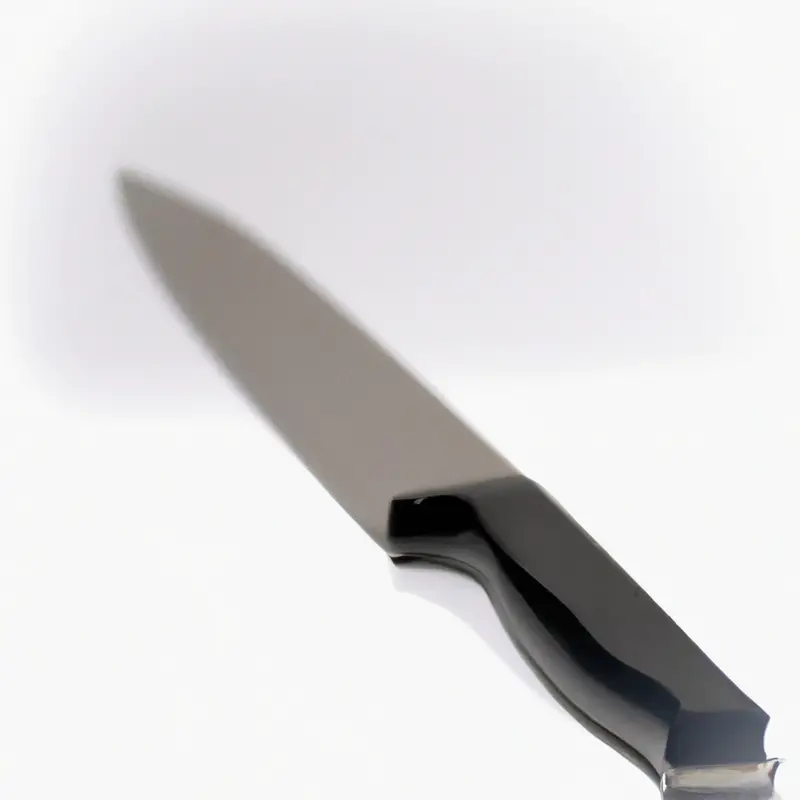
Final Verdict
A boning knife is an essential tool for any serious home cook or professional chef. Its specialized design and sharp, flexible blade make it perfect for removing bones and filleting proteins with precision and ease.
By understanding the different types of boning knives, techniques for proper use and care, and best practices for safety, you can take your culinary skills to the next level.
As with any tool in the kitchen, investing in a high-quality boning knife and regularly maintaining its sharpness will make all the difference in achieving optimal results. By following the expert tips and tricks laid out in this article, you’ll be well on your way to mastering the use of a boning knife and unleashing your full potential in the kitchen.

